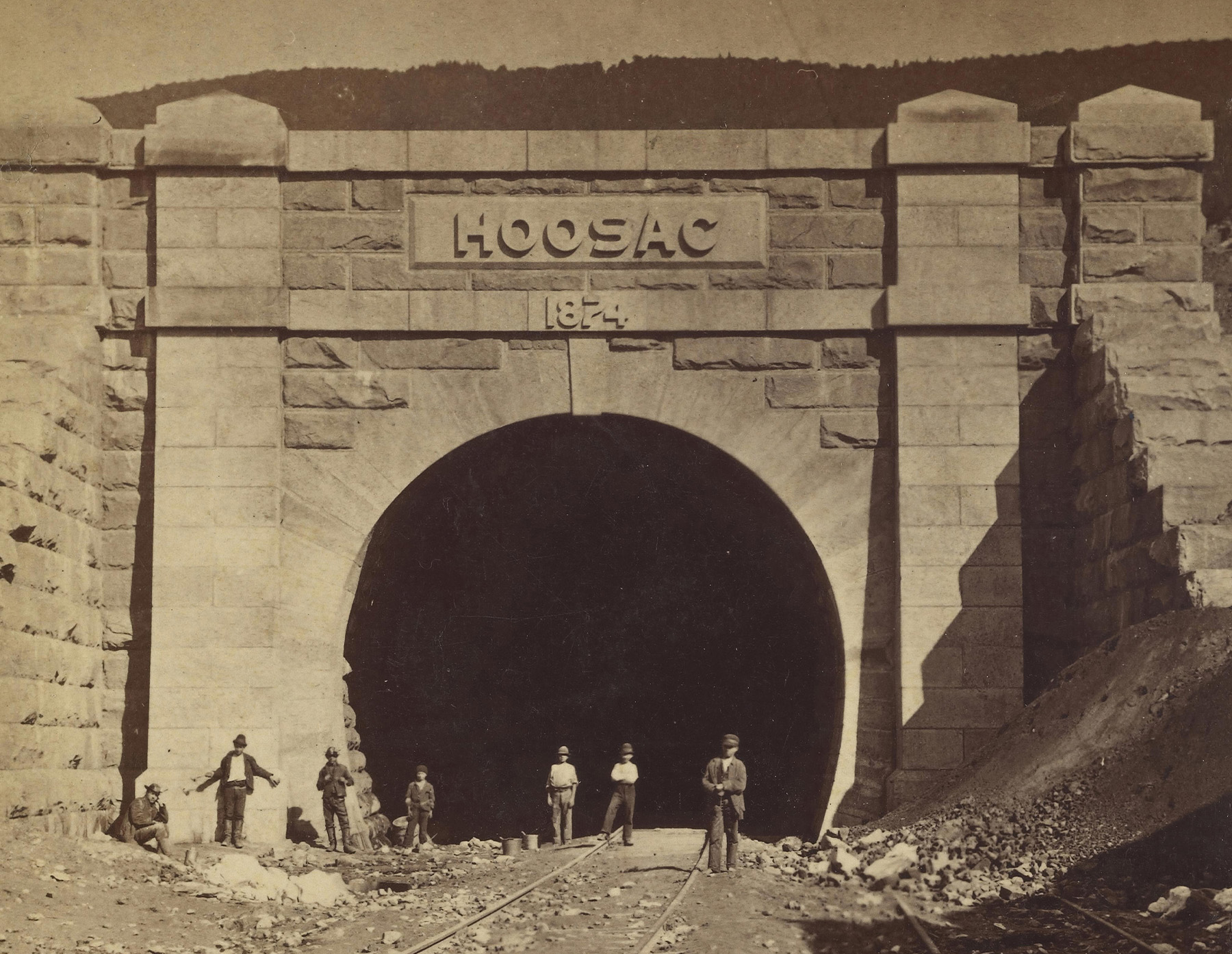
By Leslie Nemo
Nearly 25 years passed from when construction on the Hoosac Tunnel began to when it ended. In that time, the Civil War came and went. And though accidents, funding shortfalls, and personnel changes delayed thiscrucial portion of a new Massachusetts railroad, workers had only black explosive powder and hand tools for the first 15 years — limitations that make the time it took to carve a 4.75 mi path through a mountain sound more reasonable.
Found in the Berkshires, the Hoosac Range runs along the northwestern edge of Massachusetts. A railroad construction boom that began in the 1820s was laying track across the United States at a rapid pace. Lines running north and south in Massachusetts connected the state to other railroads running to New York, but Massachusetts business owners wanted a route moving west through the Hoosac Range.
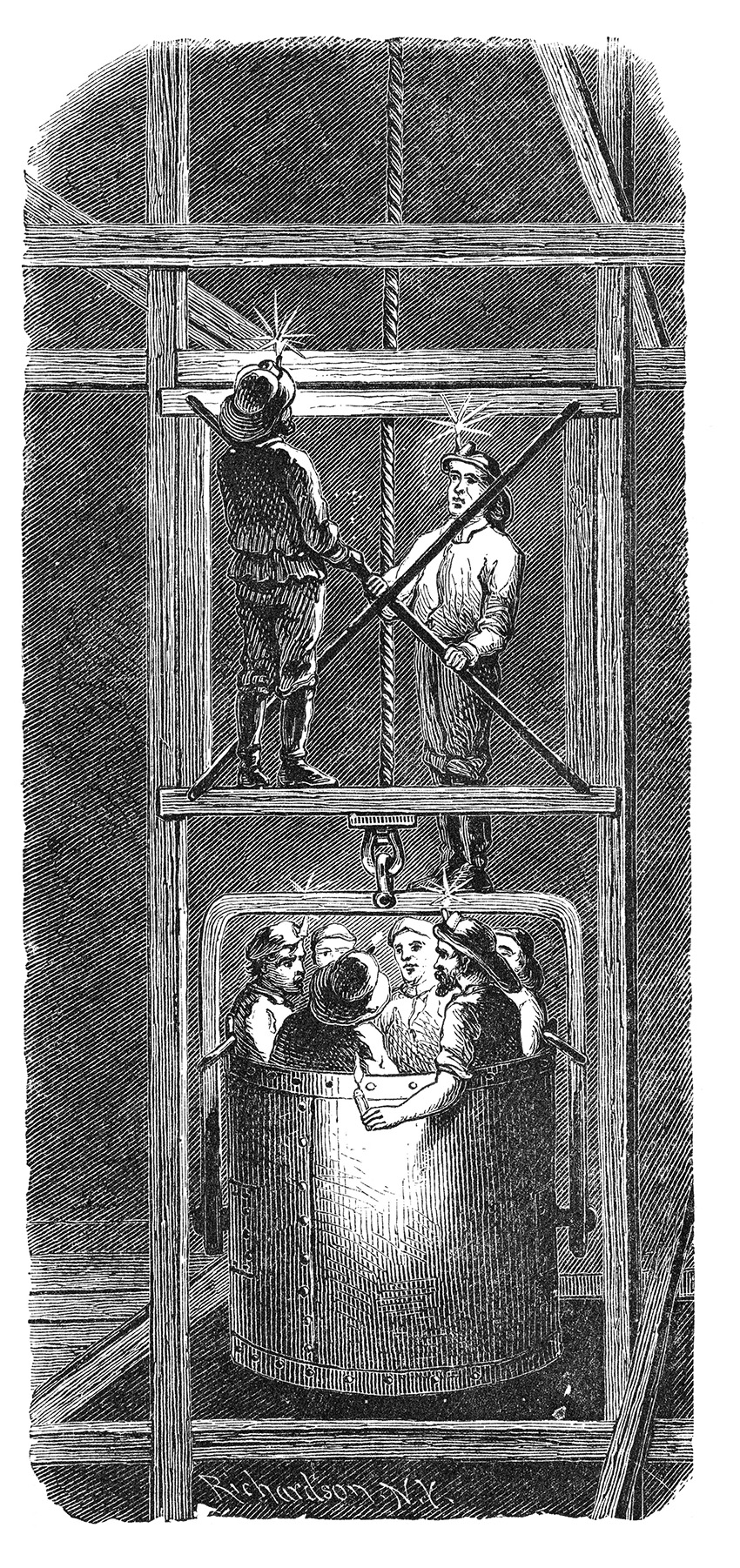
Adopting plans for a canal tunnel through the mountain first suggested in the 1820s, entrepreneurs — most prominently Alvah Crocker, a paper mill owner and local politician in Fitchburg, Massachusetts — petitioned the state for a rail company charter that would allow the company to instead dig a path through the Hoosac Range for a railroad.
Incorporated June 1, 1848, the Troy and Greenfield Railroad received permission to build a line from Greenfield, Massachusetts, to Troy, New York. Per its charter, the company had a capital stock limit of $3.5 million, but fundraising proved challenging. By 1851, the company requested $2 million from the state — money that would not come through for three more years.
As the company waited for state support, efforts to cut a hole through the Hoosac Mountain began with Charles Wilson’s creation known as the Excavator — a nearly 100-ton, cast iron boring machine meant to cut away the entire tunnel circumference with its 25 ft wide cutting wheel, according to Andrew R. Black in his book Buried Dreams: The Hoosac Tunnel and the Demise of the Railroad Age. However, after boring 10 ft into the tunnel during a trial run, the machine froze and had to be scrapped, setting an ominous tone for the rest of the construction. The company’s first chief engineer, A.F. Edwards, left soon after the equipment failed.
In the Excavator’s place came manual labor. Workers operated in teams of two or three. One person would swing a hammer to jam a drill into the rock, while another would twist the drill after each hammer strike. After the holes were 2-3 ft deep, workers would load them with black powder and then light a fuse to blast the rock away. Mules would then haul the blasted rock out of the tunnel.
Crews worked on the eastern and western portals of the tunnel simultaneously, with the latter posing more of a construction challenge. The stone on the west end, often referred to as “porridge stone,” consisted of quicksand, clay, and rock that disintegrated quickly, according to Black. The work was slow going and deadly for the crews made up mostly of Irish immigrants. Between 1820 and 1860, a third of new immigrants to the U.S. were from Ireland, and with Boston as a common entry city, people often searched for jobs in the surrounding area.
After Edwards departed, the Hoosac Tunnel project gained its next long-term chief engineer in 1856 when Herman Haupt took the position. Though the railroad engineer and bridge expert invested in Troy and Greenfield with four others, Haupt soon discovered that all of them were too in debt to contribute the funds that would allow construction to continue at a steady pace. Instead, Haupt alone became the largest investor in the company and a board member.
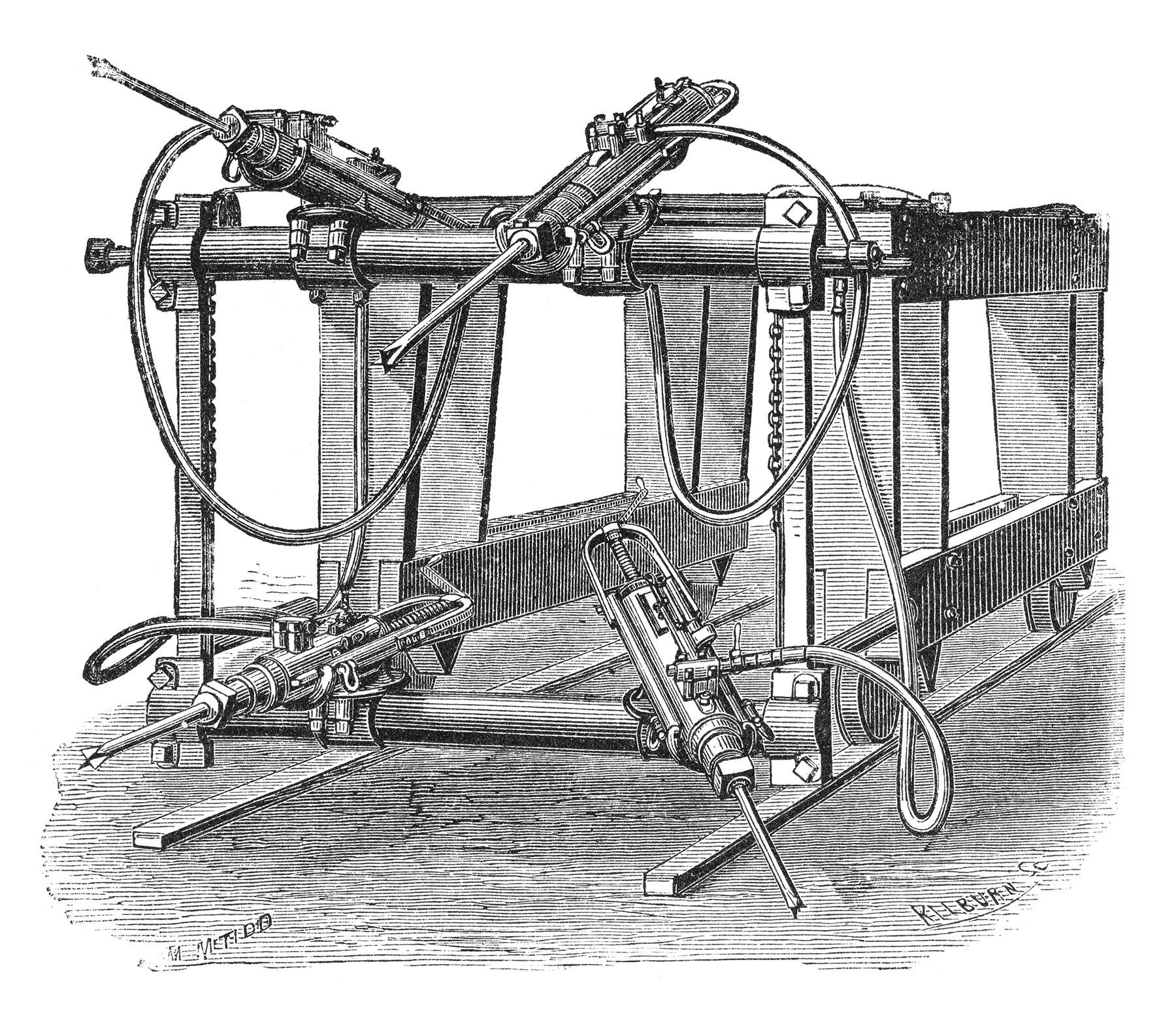
Haupt brought an enthusiasm for boring machines to the project, though the inventions he introduced never succeeded. The first, from the same creator as the Excavator, was a 40-ton machine with “a massive head of rotating blades intended to cut an eight-foot-diameter hole in the tunnel’s rock heading,” wrote Black. It failed on-site in August 1857. The second, a prototype of a steam-powered percussion drill developed by Boston mechanic Stuart Gwynn, went up in flames when Gwynn’s foundry burned down two years later.
By the early 1860s, the political landscape had shifted. Inaugurated in January 1861, Gov. John A. Andrew demanded the current state engineer resign. Andrew’s mistrust and lack of support of Haupt’s methods did not help his progress, and the collapse of a bridge carrying another part of the railway further weakened his position. The new state engineer overseeing the work drastically cut loans to Haupt, who had been reliant on state funds from 1858 onward.
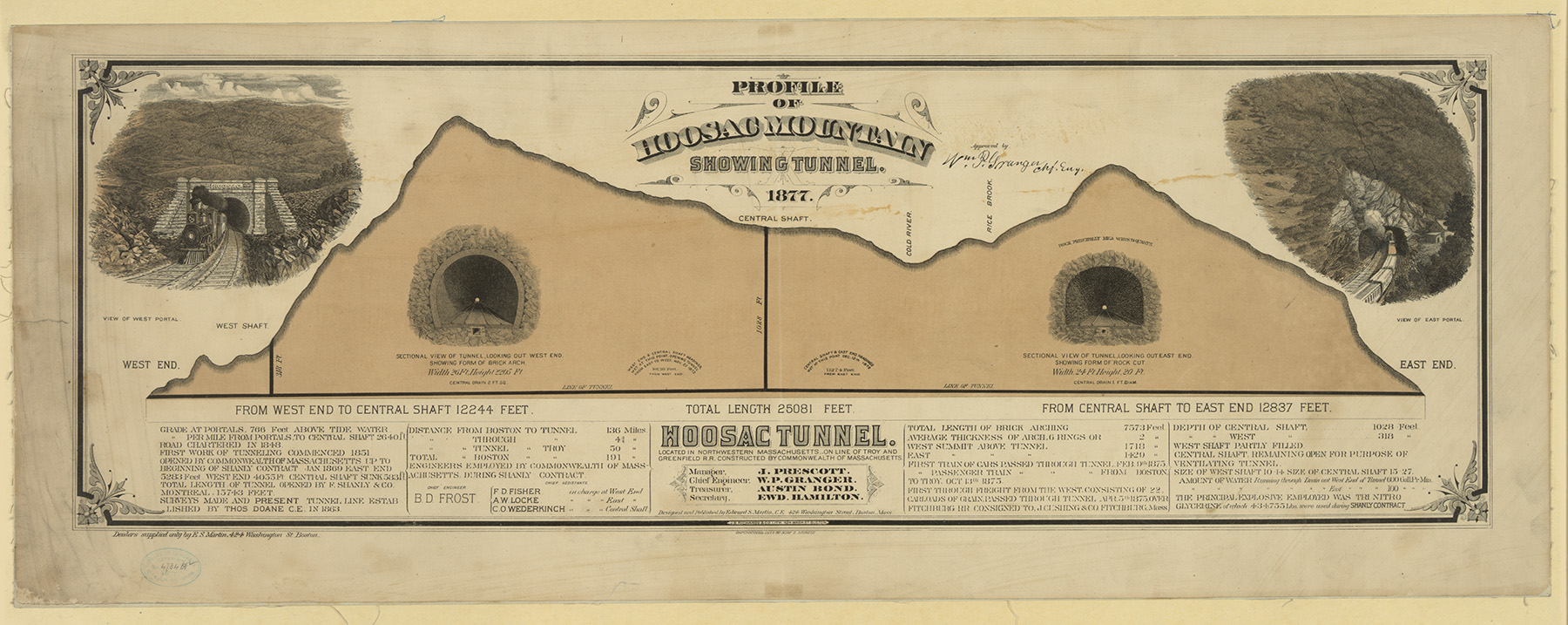
Haupt stopped work in July 1861, and by 1862, he was repairing destroyed bridges and railways for the Union army. Officially bankrupt, Troy and Greenfield allowed the state to take control of tunnel progress. Less than a mile of tunnel — approximately 0.5 mi at the eastern end and 600 ft at the western end — had been carved, with approximately 4 mi to go, according to Edward C. Kirkland in “The Hoosac Tunnel Route: The Great Bore” (The New England Quarterly, March 1947, Vol. 20, No. 1, pages 88-113).
With the Civil War raging in the background, Andrew formed a three-person task force made up of railroad presidents to determine if and how the project could proceed. These commissioners turned for help to three engineers known for their expertise. Two of the engineers traveled to the Hoosac Tunnel to evaluate the work there, while the third visited Europe to observe the excavation of the Mont Cenis tunnel through the Alps. Nearly two years later, the commissioners filed a report with Andrew suggesting that the tunnel should continue. Andrew agreed, and in April 1863, the Massachusetts state legislature approved a bill authorizing the commissioners’ suggested construction methods.
In June, the commissioners also announced a new chief engineer: Thomas Doane. Though Haupt had dug his own vertical shaft in the mountain, Doane and his crew embarked on a centrally located design. According to the commissioners, this new shaft, which they had insisted on, would speed up construction once it hit grade some 1,000 ft below and would boost ventilation for workers. “... (T)he shaft later failed to fulfill the second purpose, and as a means of hastening excavation it was handicap rather than help,” writes Kirkland.
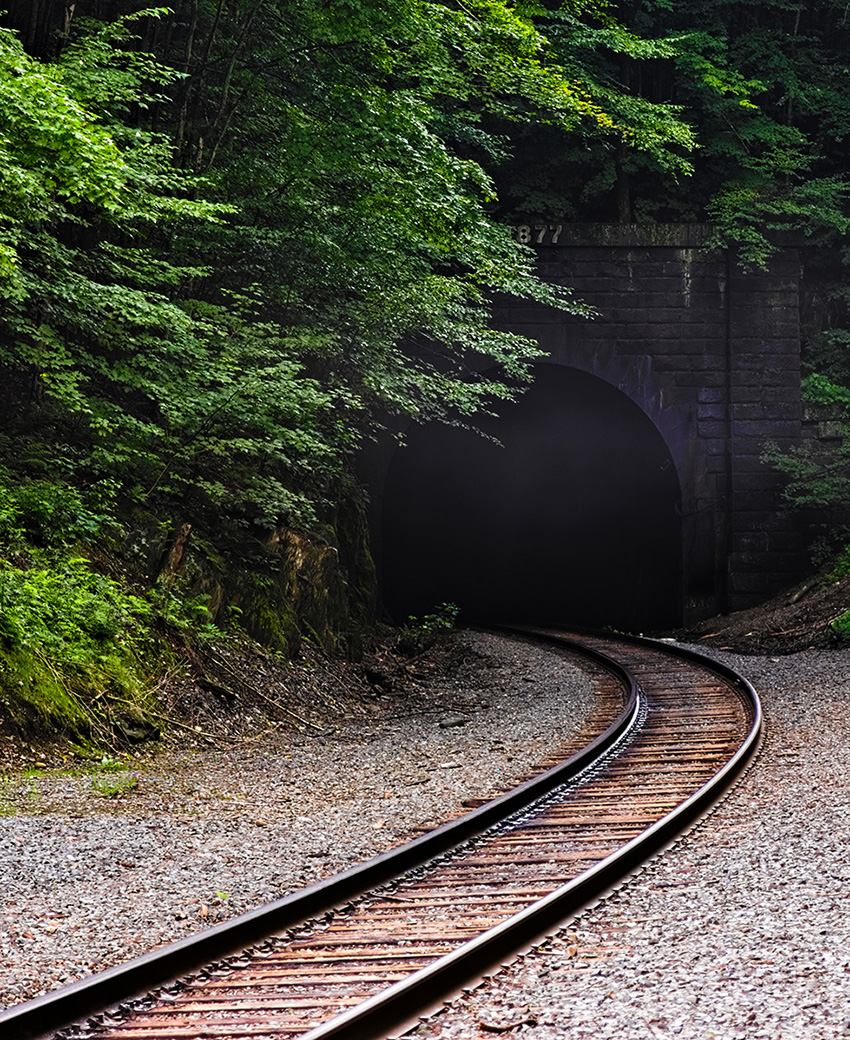
What’s more, the shaft was prone to flooding, so workers built a drainage system as well as a 10 ft thick, 30 ft deep cement wall to reinforce the 27 ft by 15 ft ellipsis-shaped opening with “its long side running along the line of the tunnel,” writes Black. Both ends of the oval shaft eventually had a steam engine-powered bucket hoist once the digging reached tunnel grade.
Evidence from the Mont Cenis tunnel convinced the railroad commissioners that workers could safely and effectively deploy mechanical drills powered by compressed air, according to Edward Sandford Martin in his book History of the Hoosac Tunnel. Before any such drills were available, Doane prepared for their use by directing workers to build a crib dam on the Deerfield River, a stream near the eastern tunnel entrance. This water was brought by canal to a compressor building near the east entrance, which would allow it to fall 30 ft and power the air compressors that would run the mechanical drills at the east portal.
The hydropower construction ended in 1864, just before one of the worst accidents struck the tunnel. The following year in October, an attempt to light the interior of the central shaft using gasoline led to a fire that filled the shaft and burned the equipment within and above it. The shaft flooded, and equipment and burning wood fell into the opening, crushing crew members. The accident killed 24, and work stopped at the shaft for almost a year.
Far from the site of the central shaft tragedy, however, work continued. Reliable mechanical drills arrived in 1866 after a few promising iterations broke on the scene. The “Burleighs,” as they were called, were 372 lb and could drill 116 ft a month. Workers rolled the equipment in and out of blast zones and picked new drilling locations with ease thanks to a “track-mounted drill carriage” that Doane developed, per Black.
Nitroglycerin, an ingredient in dynamite, began appearing as an alternative to black powder around the time when the Burleighs debuted at the construction site. In 1867, Doane accepted help from George Mowbray, a chemist working with his own highly pure form of nitroglycerin that he dubbed “trinitroglycerin,” according to Black. A manufacturing plant for Mowbray’s explosive went up near the western portal that same year, turning out more than half a million pounds of explosive for the project.
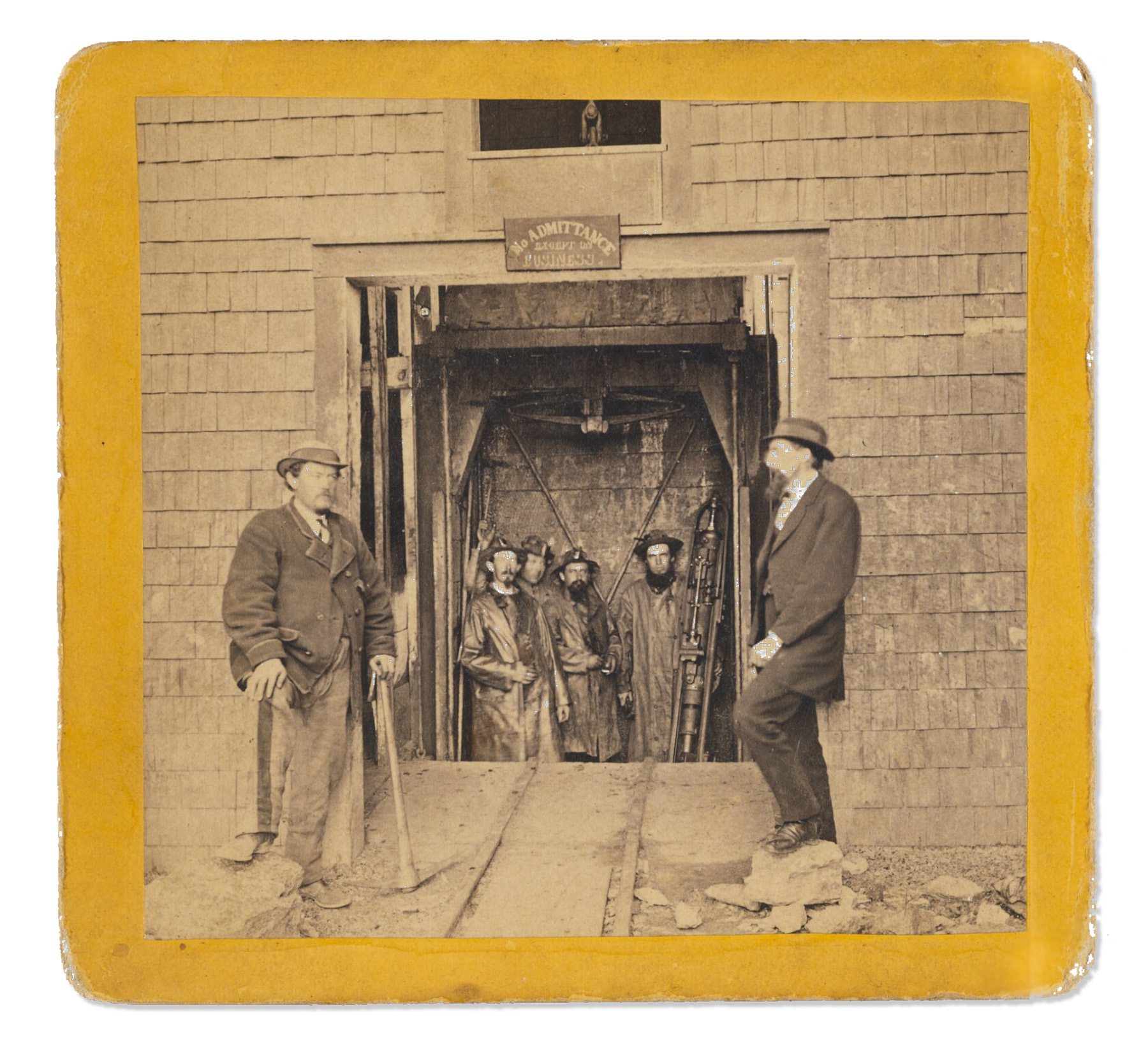
Thanks to a lucky accident that resulted in a shipment overturning in the snow, Mowbray learned the explosive was safe to handle when frozen. From then on, miners received it in this state and thawed the chemical before detonation.
State-of-the-art fuses also brought a new element to the construction. The fuses were encased in wood and held two, almost touching wires within a fulminate core. When fed a surge of electricity, the wires would spark, triggering the fuse and nearby explosives.
The Burleighs, trinitroglycerin, and electric fuses together made for a dynamic new excavation strategy. Angled to create a V, the drills hammered holes 8-12 ft deep, which workers loaded with tubes of trinitroglycerin that were about 2 in. in diameter and 3-4 ft long, according to Martin. A wooden fuse would ignite the rock-clearing blast.
Doane also changed his construction strategy at the western end, where the porridge stone made excavation difficult. Per the commissioners’ joint recommendation, Doane instructed workers to dig a 30 ft wide trench with wood-reinforced walls into the mountainside, and to drain the trench he placed adits at its base. Within the trench, workers built an eight-layer brick tube that extended into the mountain 931 ft. The brick infrastructure, built by a local contractor, convinced the commissioners that all further work would be carried out on a contractual basis instead of being managed by staff, per Black.
In 1868, when the state legislature authorized another $5 million for the tunnel, the bill stated that one contractor was to complete the rest of the work. The team chosen for the job was the Shanly Brothers. Signed on Dec. 24, the contract stipulated they would complete the tunnel for $4.5 million by March 1874.
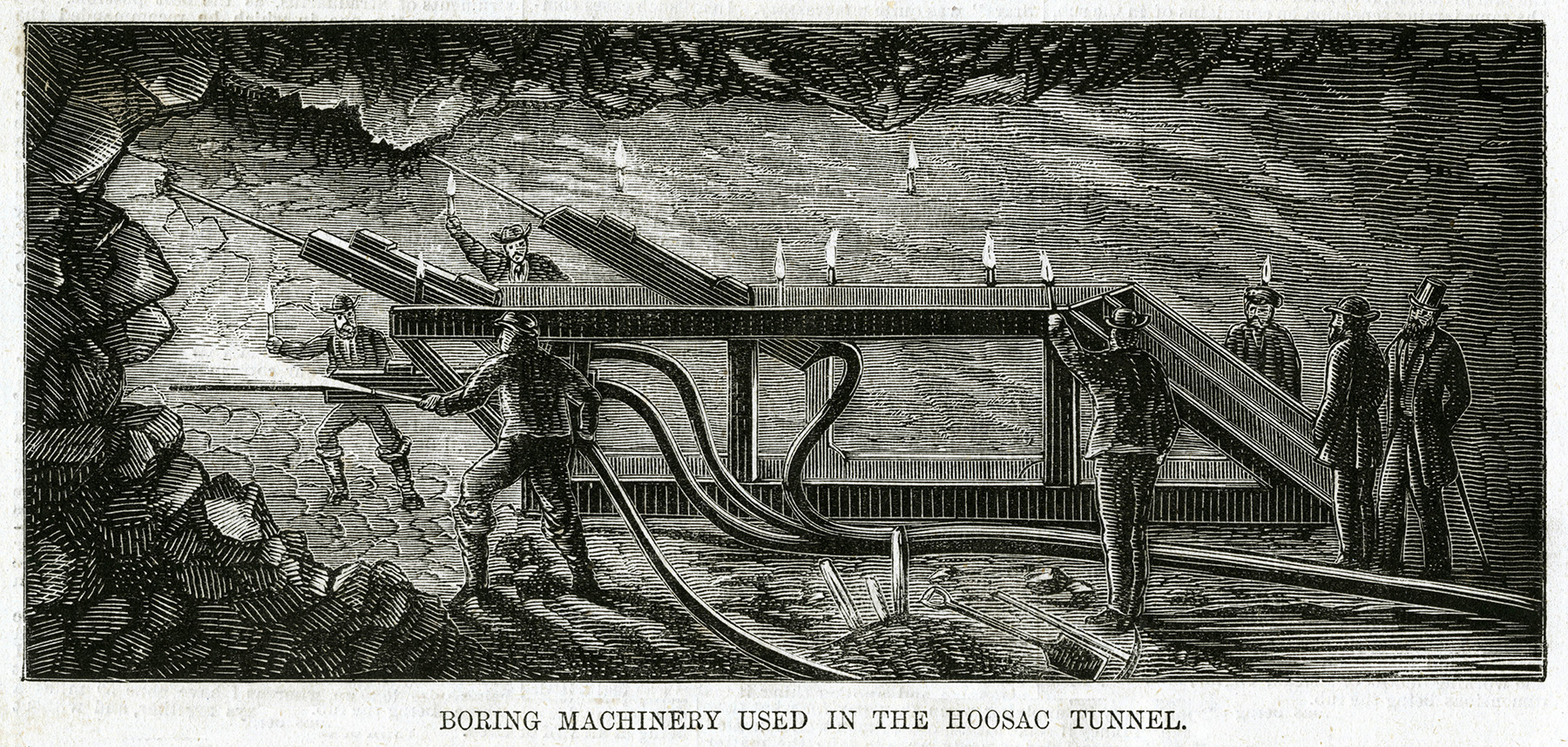
The Burleigh drills, trinitroglycerin, and fuses helped the duo and their workers move 160 ft a month on the eastern end and 120 ft a month on the western end, crushing previous progress records. The center shaft reached grade in 1870 but continued to be stalled by flooding that stopped work several times, pushing the Shanly Brothers to pay for $250,000 worth of pumping equipment. Walter Shanly did not believe the central shaft was needed, but it was part of the team’s contract to complete it. However, in private meetings with Gov. William B. Washburn in summer 1872, the brothers persuaded him to let them give up progress on the central shaft’s west heading, lest it create flooding great enough to end the project.
Later that year, digging from the eastern entrance hit the central shaft, resolving pumping issues at the west heading, with water draining into the Deerfield River. In November 1873, workers drilling toward one another stopped once 16 ft of rock separated them. The one Shanly brother still working on the project invited politicians, miners, and locals — about 600 people in all — into the tunnel on Thanksgiving to witness this historic moment. That afternoon, the final blast separating the two sections detonated.
Work continued on the railroad tracks leading up to and within the tunnel. The brick tube Doane authorized and the extra brick the Shanlys added as work progressed were not enough. The rock was unstable enough that falling chunks continued to kill workers, so the state paid for another 5,600 linear ft of brick arching. Almost a third of the tunnel was ultimately lined by brick.
Though minor work had yet to be completed, the first train rumbled through the Hoosac Tunnel on Feb. 9, 1875.
Come 1877, the project fees plus interest had cost Massachusetts $17 million, even though the original Troy and Greenfield company charter stock allowance of $3.5 million was more than what early estimates of the project thought the entire railroad would cost. It had also cost the lives of at least 135 men, with another 60 hurt so badly they never worked again or only briefly survived their injuries, according to Black.
The innovations deployed at the tunnel became construction mainstays — the Burleigh drills went into production for other mining operations around the country before the Hoosac Tunnel was complete and became the blueprint for all other piston-style drills. So for as long as the tunnel took, it was the first stage for a new era of drilling technology. In other words, its timing was perfect.
The Hoosac Tunnel was designated an ASCE historic civil engineering landmark in 1975.
Leslie Nemo is a journalist based in Brooklyn, New York, who writes about science, culture, and the environment.
This article first appeared in the January/February 2024 print issue of Civil Engineering as “The Power of Electricity and Drills.”



